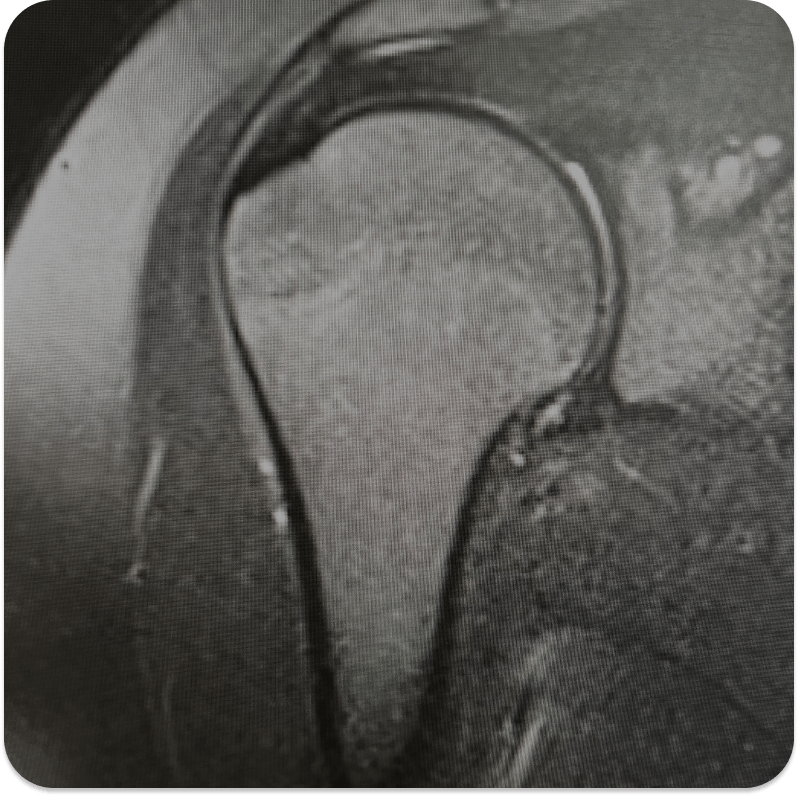Rotator Cuff Surgery
Everything you need to know about your rotator cuff’s anatomy and treatment
Healthy
Torn or Unhealthy


Healthy

Torn or Unhealthy

What is the rotator cuff?
The most common misconception is that the rotator cuff is one tendon in the shoulder. It is actually comprised of four muscles that surround the shoulder blade (scapula) which attach to the bone (proximal humerus) through four tendons in the shoulder joint. The job of the rotator cuff is to compress the ball to the socket and help lift and rotate the arm while keeping your shoulder in place. The shoulder is made up of a ball-and-socket joint. The ball, or the head of the upper arm bone (the humerus), fits into the socket of the shoulder blade (the glenoid). The rotator cuff is like a sleeve surrounding the humerus, which provides stability and strength to the shoulder.
Meet the Best Rotator Cuff Surgeon in Chicago
You want the best care possible when you find out you have a rotator cuff injury. While choosing a doctor in the Chicagoland area, education, experience, and competence go a long way in ensuring you are treated appropriately and effectively. Dr. Gregory Drake is the advisor and surgeon you need.

Rotator Cuff Tears & Injuries
Rotator cuff tears are unfortunately, common. They can be caused by a fall, repetitive shoulder use, a bone spur, or degeneration. Some risk factors include a family history, smoking, those over 40 years of age, and people who work in professions that require repetitive shoulder movements or overhead use. Rotator cuff tears more often happen on your dominant side but can occur in either shoulder.
Rotator Cuff Tear Treatments
Treatment for a rotator cuff tear depends on the severity of the condition. A rotator cuff tear can be partial or full thickness and can be determined by a physical exam and an MRI. X-rays are still needed to assess for bone spurs and arthritis. If the rotator cuff tear is partial or small, conservative measures such as NSAIDS, physical therapy or an injection may be effective at treating the tear.
Surgery is likely to be recommended if the tear is full thickness, the conservative therapies do not relieve the pain, or if the movement of the shoulder remains compromised. Full tears typically require surgical intervention as they will typically worsen over time and can become irrepairable. Thousands of patients each year seek Dr. Drake for their arthroscopic rotator tear cuff treatment in Chicago, and at Level Up Shoulder we strive to give you a pain free shoulder.
When Is Rotator Cuff Surgery Needed?
When non-surgical treatments fail to relieve pain from a torn rotator cuff or if your tear is full thickness, Dr. Drake is likely to suggest surgery. Small tears and partial tears do not require surgery. Conservative treatments are considered unsuccessful if you continue to experience significant shoulder pain, weakness or you suffer limited shoulder mobility. If any of these conditions are interfering with your daily life, normal activities, or sleep, surgery might be indicated.
What Is Arthroscopic Rotator Cuff Repair?
Rotator cuff repairs are treated arthroscopically at Level Up Shoulder. Dr. Drake uses an arthroscope, which is a small cylindrical instrument with a light, a lens, and a camera that is inserted into the shoulder joint. The camera projects images onto a large screen, allowing Dr. Drake to visualize the details of the joint, the labrum, the biceps, and the rotator cuff. Depending on the condition being treated, the procedure is typically performed using 3-4 small arthroscopic incisions. General anesthetic and a regional nerve block are used. Surgery is typically performed in less than 40 minutes and patients go home the same day!
Frequently Asked Questions
What should I expect after an arthroscopic rotator cuff surgery?
Following an arthroscopic rotator cuff surgery, you will be discharged the same day. A sling will be worn for 6 weeks, with pendulum exercises beginning on the first day after surgery. Pain medication, Tylenol and ice will be utilized to treat the pain and swelling. At 2 weeks after surgery, formal physical therapy will commence. One cannot actively use the shoulder for lifting, pushing, or pulling for 3 months following surgery, however, use of the hands for typing and light use can start immediately following the procedure. Driving may start once pain medications have been stopped. Full healing can take 6 months to a year.
How long does an arthroscopic rotator cuff surgery take?
Patients will need to arrive at least one hour prior to surgery. Surgical times vary depending on the severity of the tear, however, most repairs take less than 40 minutes. About an hour will be spent in the recovery room, prior to discharge.
What are exercises for the rotator cuff after an arthroscopic repair?
Pendulum exercises are started immediately following the procedure. At 2 weeks following the procedure, formal physical therapy will begin. Passive range of motion is initiated and continues until the three-month mark. At that time, active range of motion of the shoulder may begin. The physical therapist will also begin strengthening the shoulder at 3 months following the repair.


